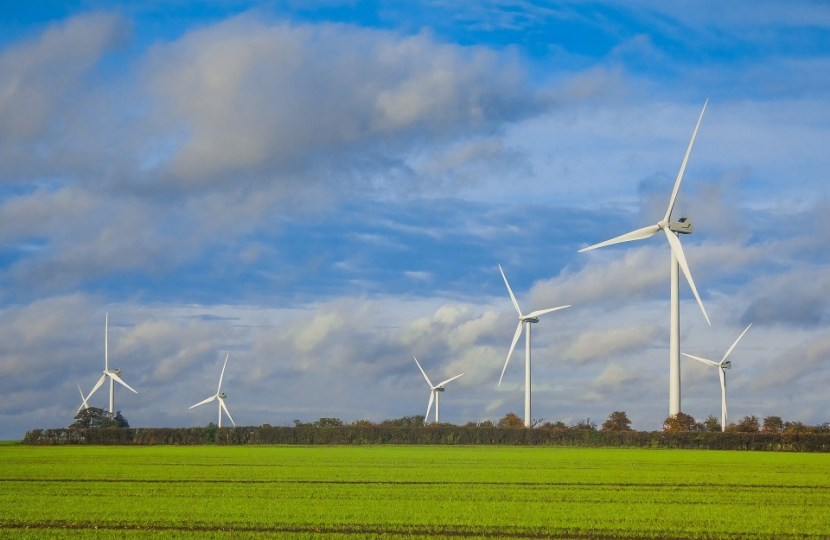
Onshore wind projects supported by local people will be approved more quickly in England, in new measures being brought forward by the government today (5 September 2023).
The government has now streamlined planning rules, meaning local areas have a greater say in how onshore wind projects should be considered, ultimately resulting in electricity bill savings and increased national energy security.
The measures include broadening the ways that suitable locations can be identified, including by communities, and speeding up the process of allocating sites by giving alternatives to the local plan process. This will ensure the whole community has a say, not just a small number of objectors – paving the way for more onshore wind projects to come online where they have community support.
This will mean local policy on onshore wind continues to be decided by elected local councillors, accountable to local people, and plans are taken forward where they can demonstrate local support and address planning impacts identified by the community.
Communities backing local wind farms could also benefit from cheaper energy under proposals to incentivise more projects announced today. The government has consulted on proposals for improved benefits and rewards for communities backing onshore wind farms and will set out next steps this autumn.
Secretary of State for Levelling Up, Housing and Communities, Michael Gove said:
To increase our energy security and develop a cleaner, greener economy, we are introducing new measures to allow local communities to back onshore wind power projects.
This will only apply in areas where developments have community support, but these changes will help build on Britain’s enormous success as a global leader in offshore wind, helping us on our journey to Net Zero.
Secretary of State for Energy and Net Zero, Claire Coutinho said:
The Energy Bill is the most significant piece of energy legislation in a generation and will help us provide a cleaner, cheaper and more secure energy system for the UK.
Renewables are a crucial part of our energy transition. They accounted for just 7% of our electricity generation in 2010, and almost 48% in the first quarter of this year. The UK is already home to the world’s 4 largest offshore wind farms, and we have invested and made available over £1 billion for Sizewell C – the first direct state backing of a nuclear project in over 30 years.
Onshore wind also has a key role to play and these changes will help speed up the delivery of projects where local communities want them.
In its response to the consultation, the government has confirmed today:
- Communities are able to bring forward proposals for onshore wind – planning policy will be changed to make clear onshore wind developments can be identified in several ways rather than through local plans. This includes through Local Development Orders and Community Right to Build Orders.
- Councils should consider the views of the whole community, rather than a small minority, when considering a planning application. This includes addressing the planning impact of onshore wind projects as identified by local communities.
Renewable energies fuelled 42% of the UK’s electricity generation in 2022, up from 7% in 2010. However, the government knows it must go further and faster to generate the clean and renewable energy the country needs.
These changes to the National Planning Policy Framework build on the progress already made to expand renewables which has seen more than £120 billion investment since 2010, kickstarting new industries like floating offshore wind and tidal power.
The announcement comes as the Energy Bill returns to Parliament, the most significant piece of energy legislation in a generation. The Bill will provide a cleaner, more affordable, and more secure energy system that is fit for the future.
The government will respond in full to the National Planning Policy Framework later this year.

